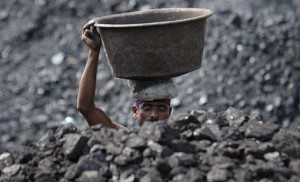 The big energy news out of India today is the government’s announcement that coal imports last month were down 5 percent over October 2014.
The big energy news out of India today is the government’s announcement that coal imports last month were down 5 percent over October 2014.
It marks the fourth consecutive monthly drop, a trend ignored by Lance Hockridge, the CEO of Aurizon, the biggest freight company in Australia, in an article published Sunday in the influential Australian Financial Review under the headline “Plenty of Steam in Indian Market.”
While Hockridge might be excused for missing the October number, it’s not likely that he is unaware of the 27 percent year-over-year decline reported in September. Indian coal exports are profoundly on the wane, yet Hockridge waxes wonderful on the opportunity in Australian thermal and coking coal that he sees in India.
In making this oddly optimistic pitch, Hockridge tars what he calls “uniformed and indeed blatantly biased commentary” (he’s talking about research we’ve done here at IEEFA (here and here, for example) and work by Carbon Tracker, two of the few independent organizations to publish regularly on Indian energy markets other than industry cheerleaders Wood Mackenzie and the International Energy Agency).
Hockridge gets it wrong on several points.
He says, for instance, that our research is “predicated on 5 percent GDP growth rate” in India, when in fact our models assume 7 percent long-term GDP growth, which is to say we’re mainstream in our outlook on that point but still don’t think GDP growth will support growth in Indian coal imports.
More to the larger point, Hockridge overlooks the crucial thing happening in India—serious and deep policy changes announced just last year by the recently elected Modi government aimed at reducing India’s appetite for imported coal.
The Arizona CEO makes mention of a development pipeline of 84 Gigawatts of coal-fired power plants under construction in India, but forgets that Energy Minister Piyush Goyal announced two weeks ago intentions to cease all such construction because of a looming capacity glut in the country’s coal-fired power sector. Massive losses are being tallied at coal-fired plants all across India today, a problem that has been worsening for three years at least and one that does not support further build-out.
Hockridge in the article also talks in uninformed fashion about the Australian coal industry’s challenge in competing with Indonesia and other coal exports. And—back to India—he derides Prime Minister Narendra Modi’s renewable-energy ambitions.
Hockridge also talks about the merits of using “high-energy, low-ash” coal from Australian mines, but makes no mention of the “low-energy, high-ash” coal that would come out of Adani’s proposed Carmichael mine (26 percent ash). Carmichael coal has up to four times the ash content of Indonesian export thermal, so it’s not really low-ash in compared to its main competitor (Indonesia currently supplies 80 percent of India’s thermal coal imports). And Carmichael coal is 15-20 percent lower in energy content that other Australian thermal coal exports.
What else doesn’t he acknowledge? That many market-altering initiatives are already in play (“Reliance Power, Indian Electricity Behemoth, Has Turned Toward Renewables” “India’s New Emissions Target Adds Momentum to Global Energy Transition,” “India’s Energy Transformation Signals an End to Coal Imports”). Among the most recent developments on this front is SunEdison’s award of a tender for 500 megawatts of Indian solar-powered energy that must be operational within 13 months (four times faster than a coal plant can be built) and that will be built for a cost that is 10-20 percent cheaper that any new imported coal-fired power generation construction.
To be sure, India will use a lot more coking coal—as opposed to thermal coal—and Queensland will most likely supply it. Thermal-coal markets are not as Hocksworth describes them, however.
India will continue to use more thermal coal for some time to come, but it will be increasingly produced by domestic Indian sources—exactly as Energy Minister Goyal has forecast, and exactly as Coal India Limited keeps reporting.
Meanwhile, solar grows even cheaper, and the global rush of investors into Indian renewables will only continue to accelerate.
Tim Buckley is director of energy finance studies, Australasia.
Source: IEEFA. Reproduced with permission.








